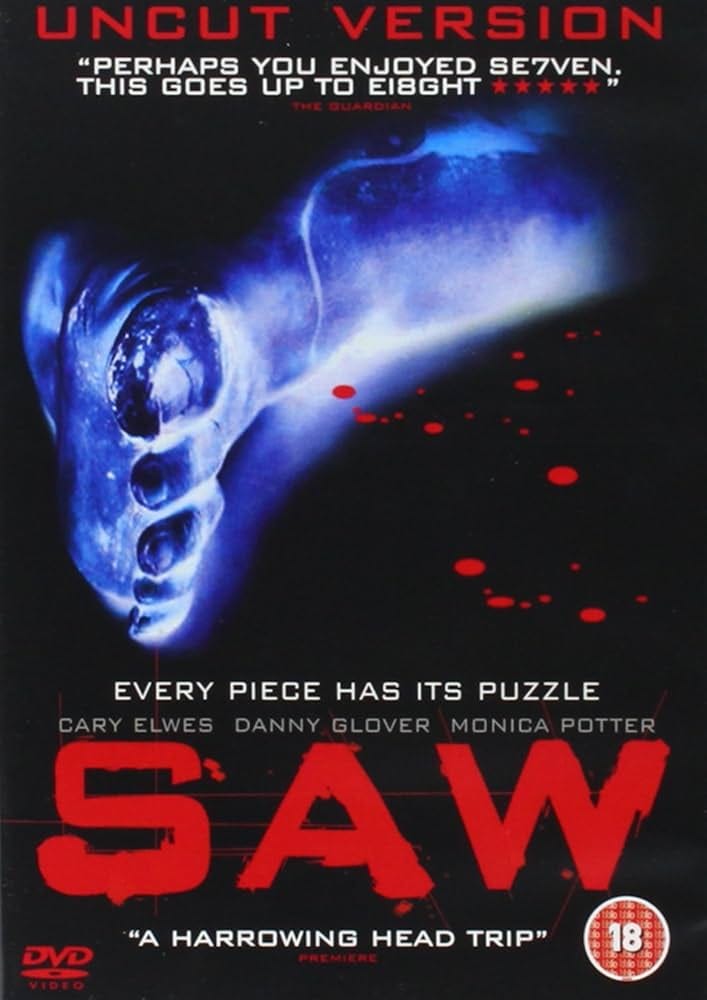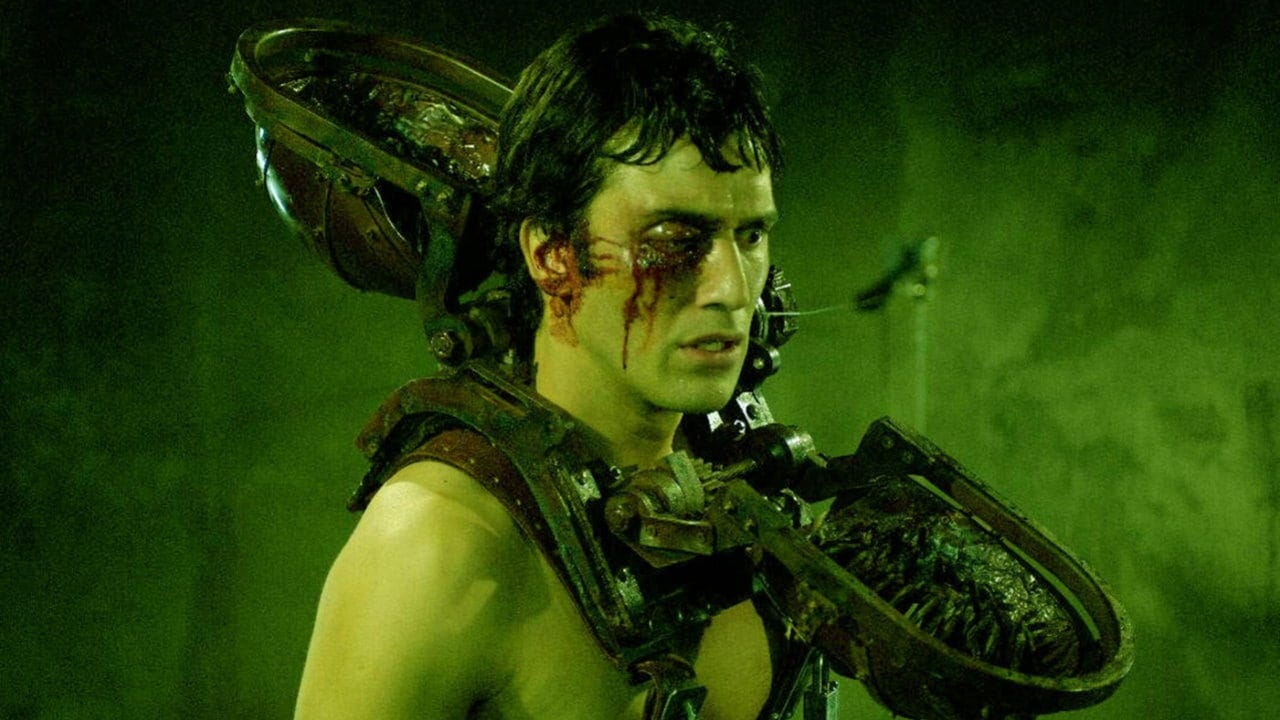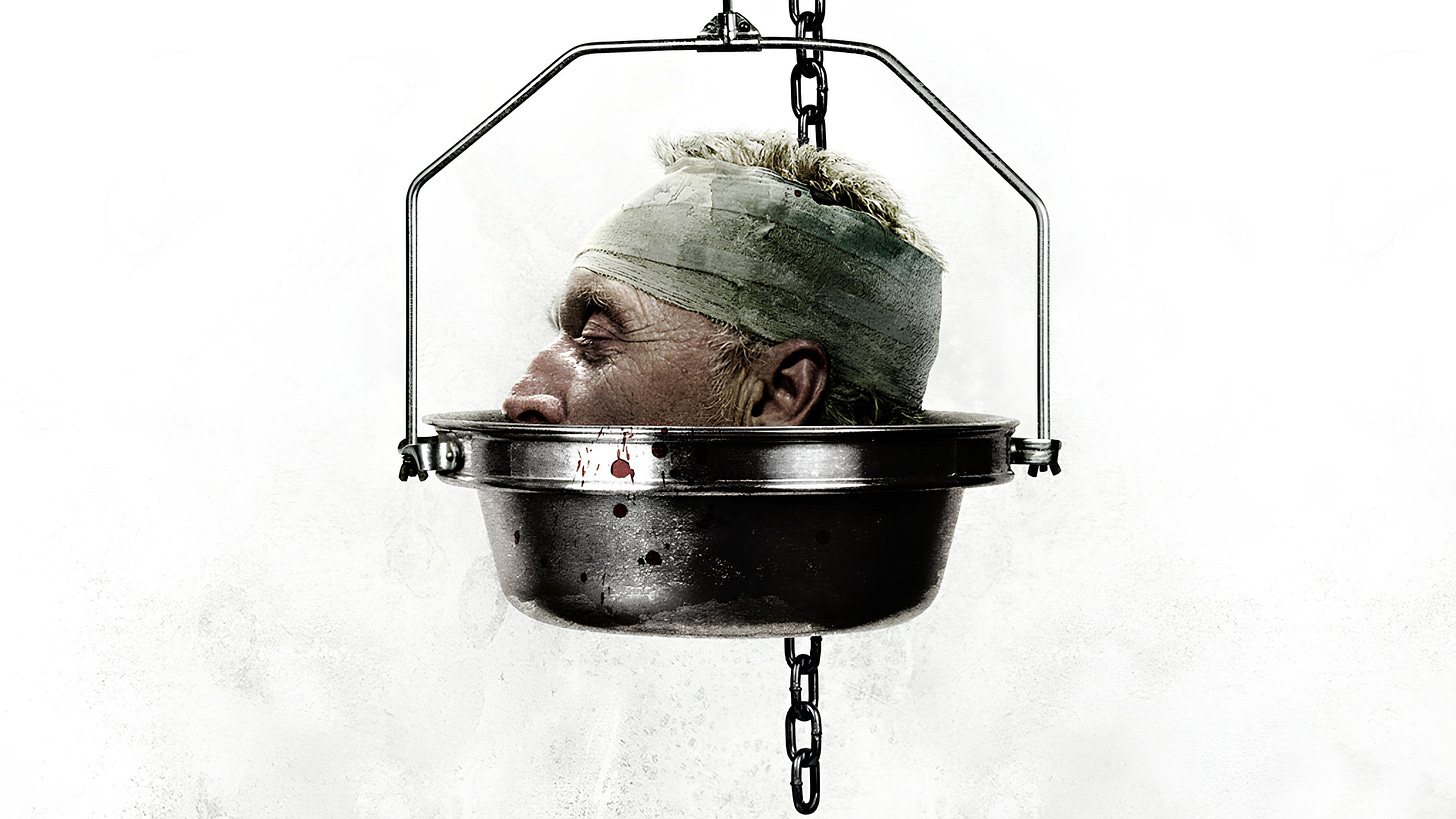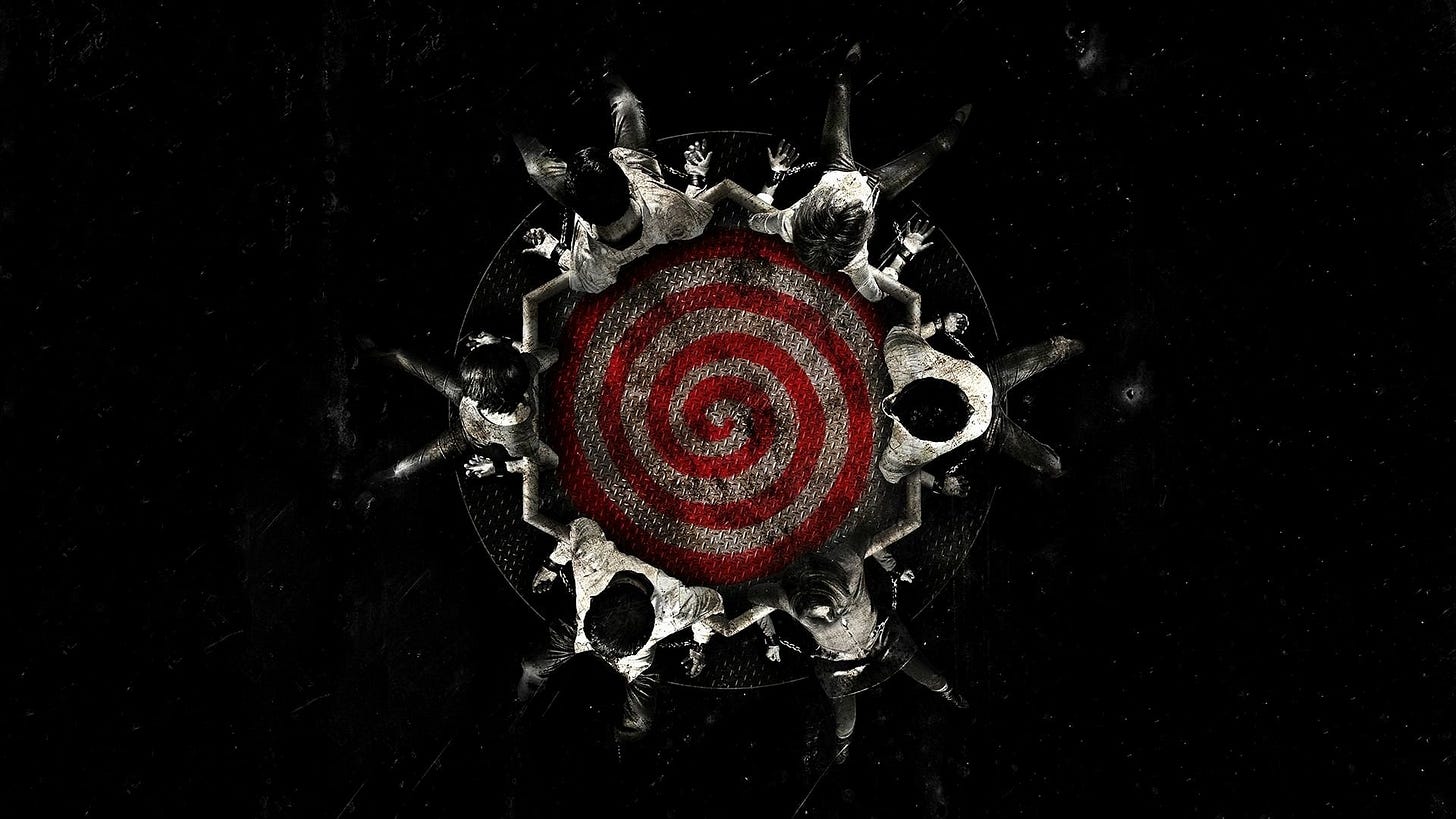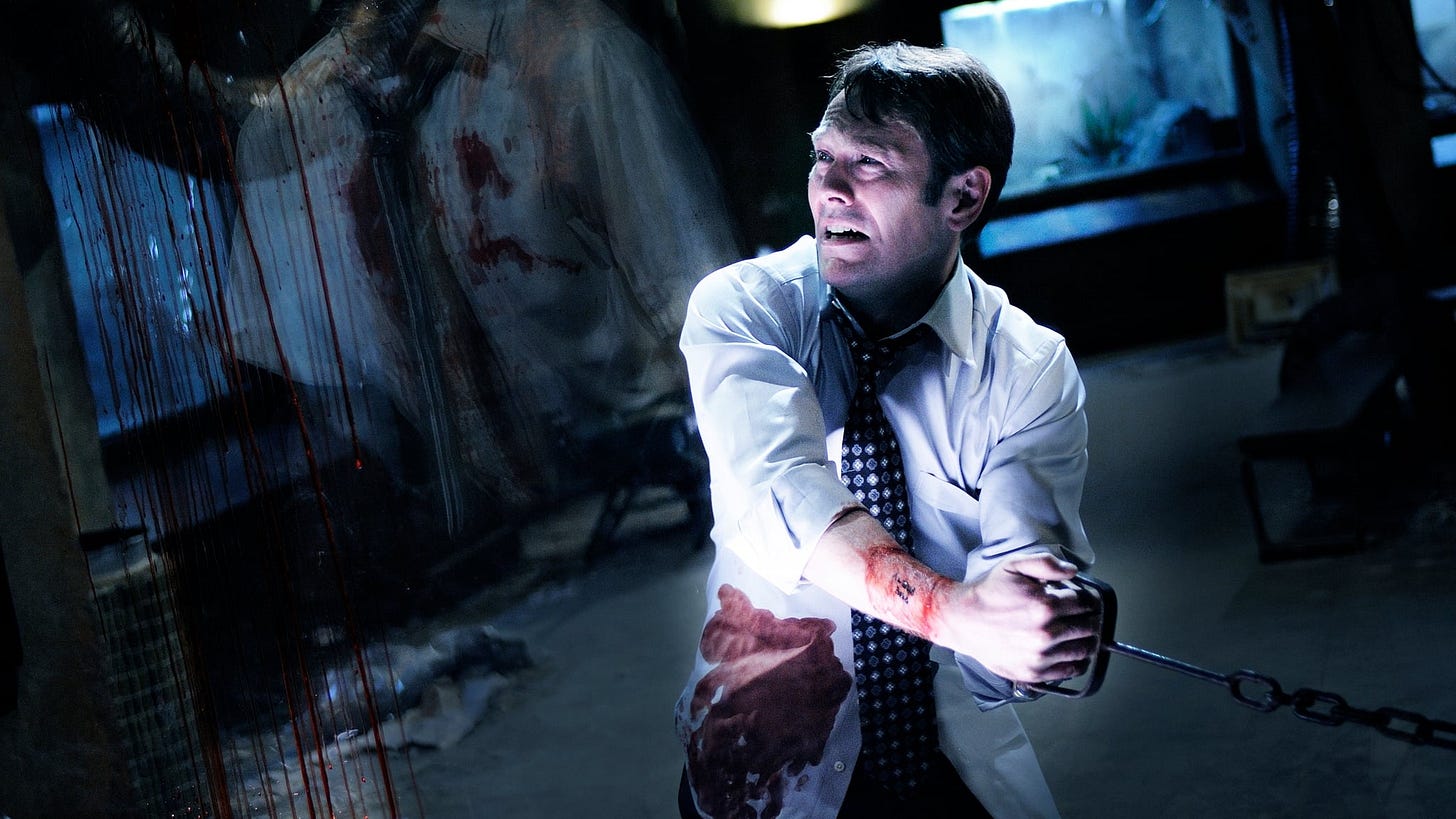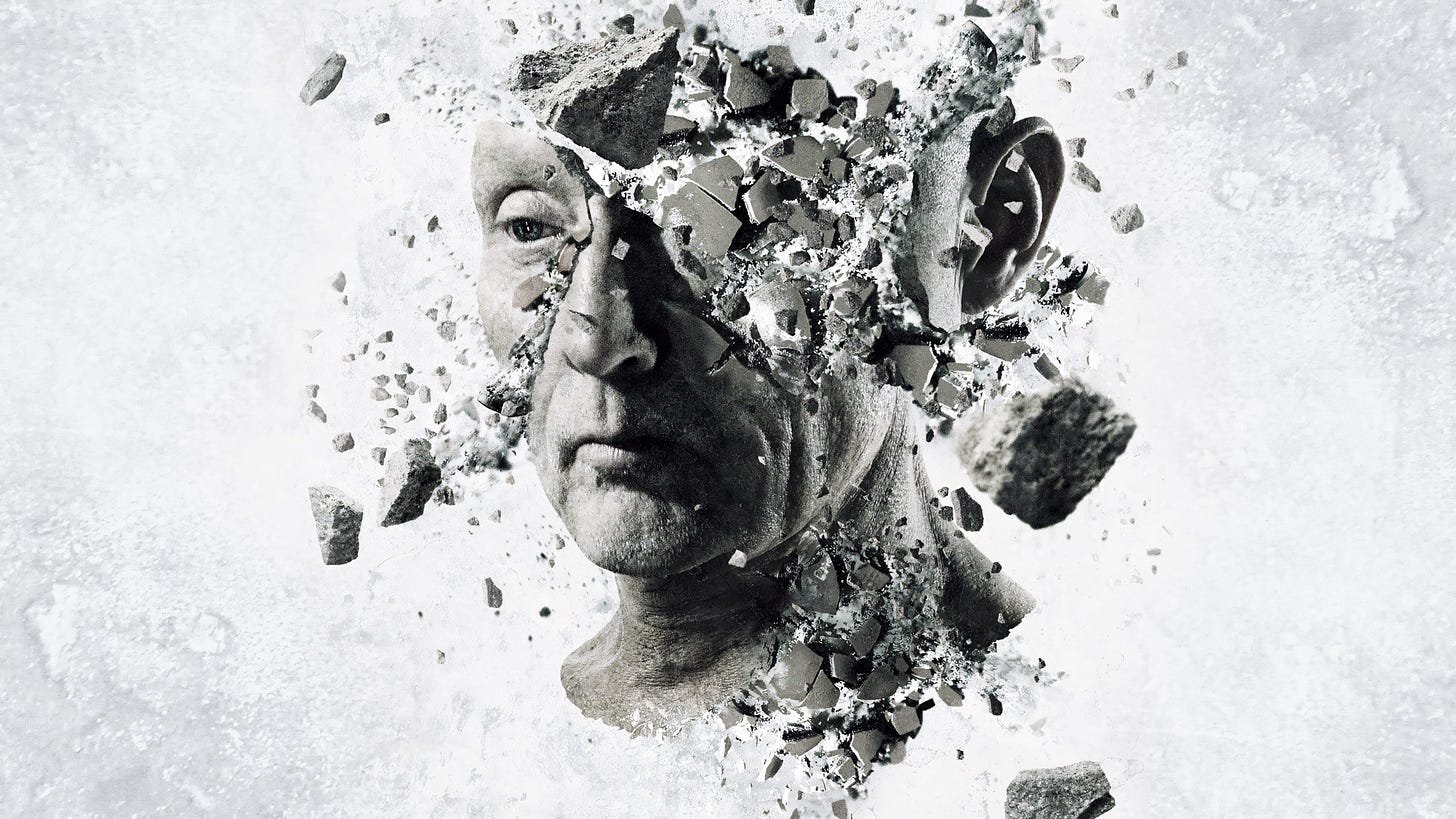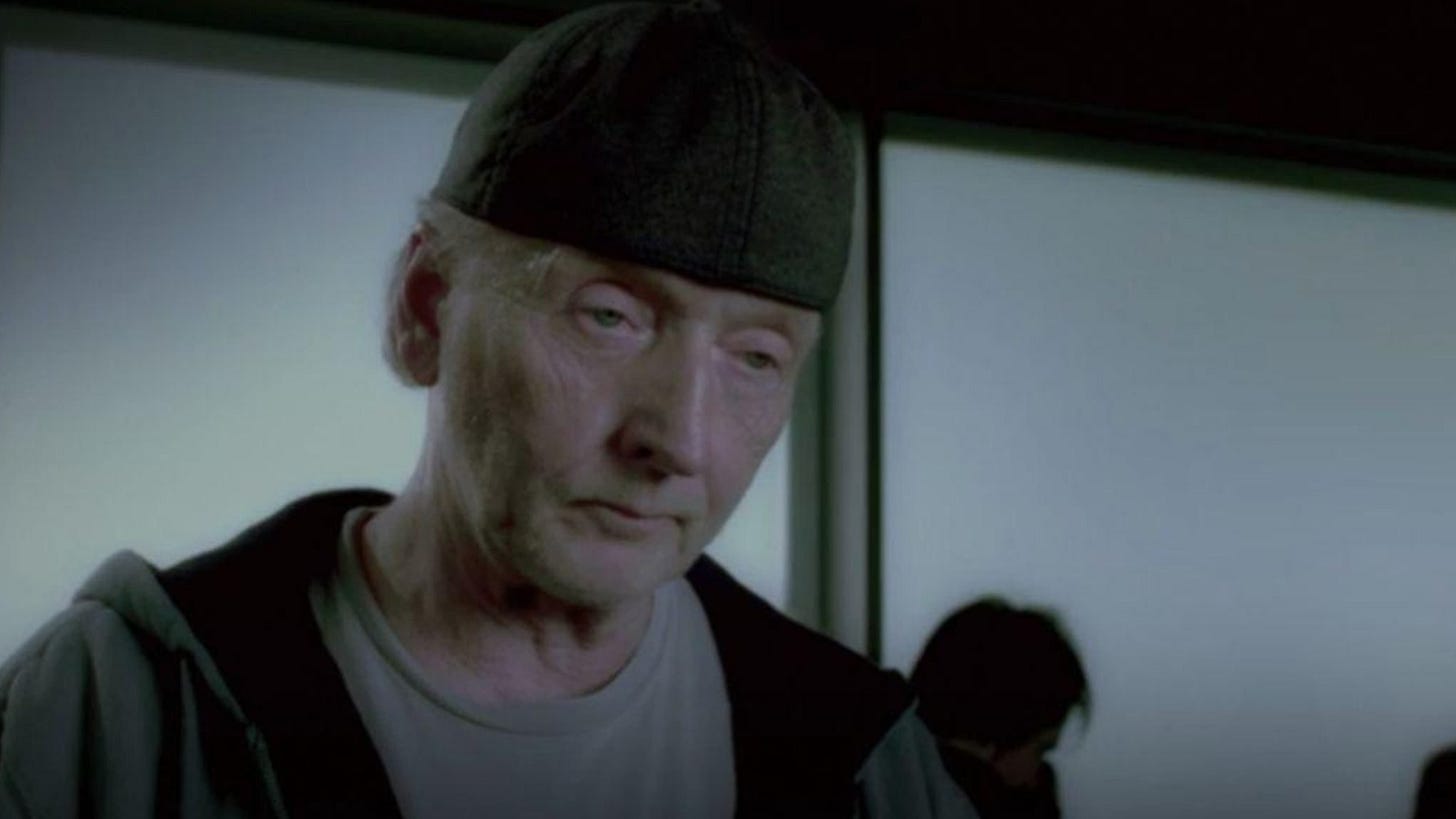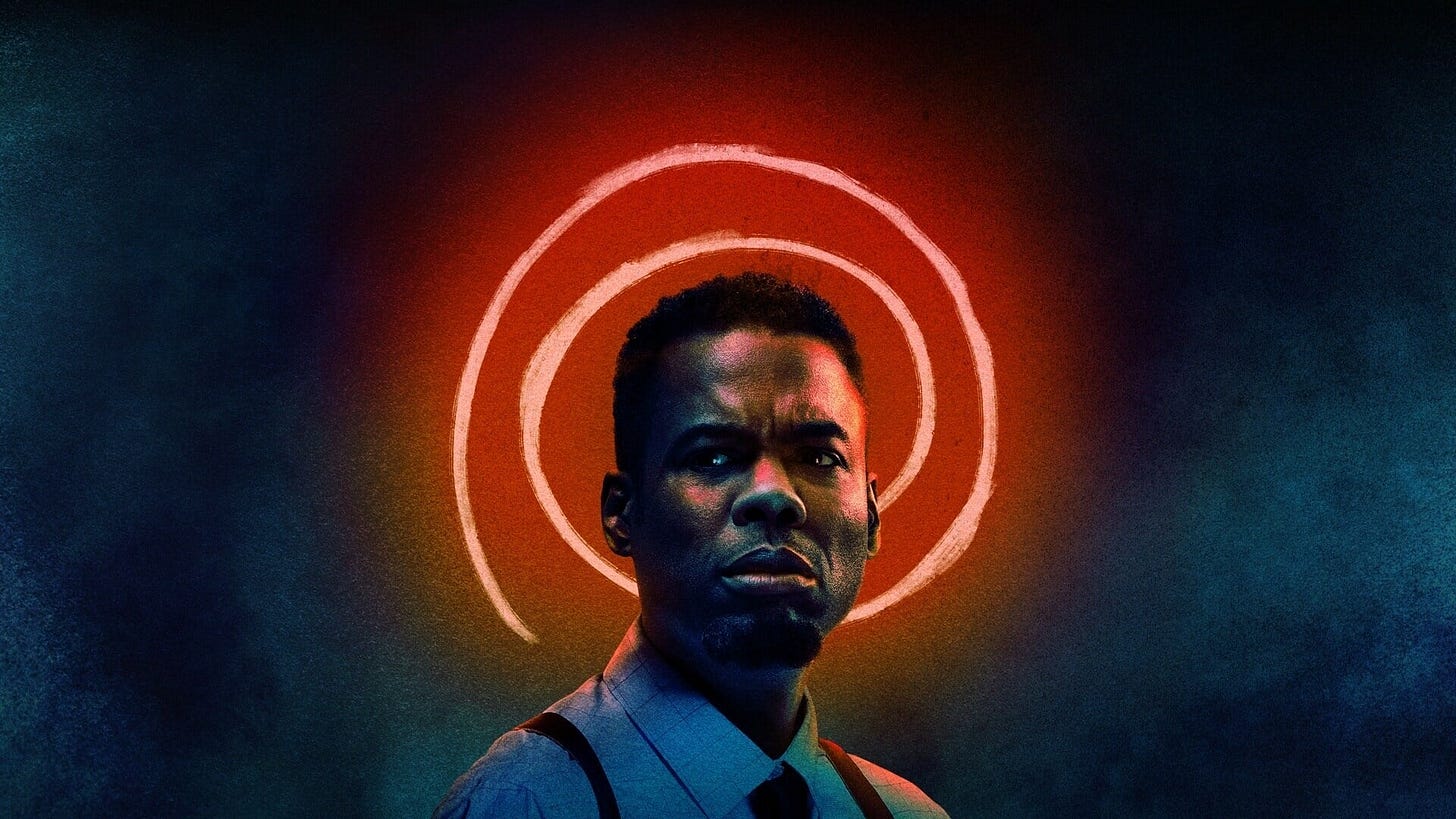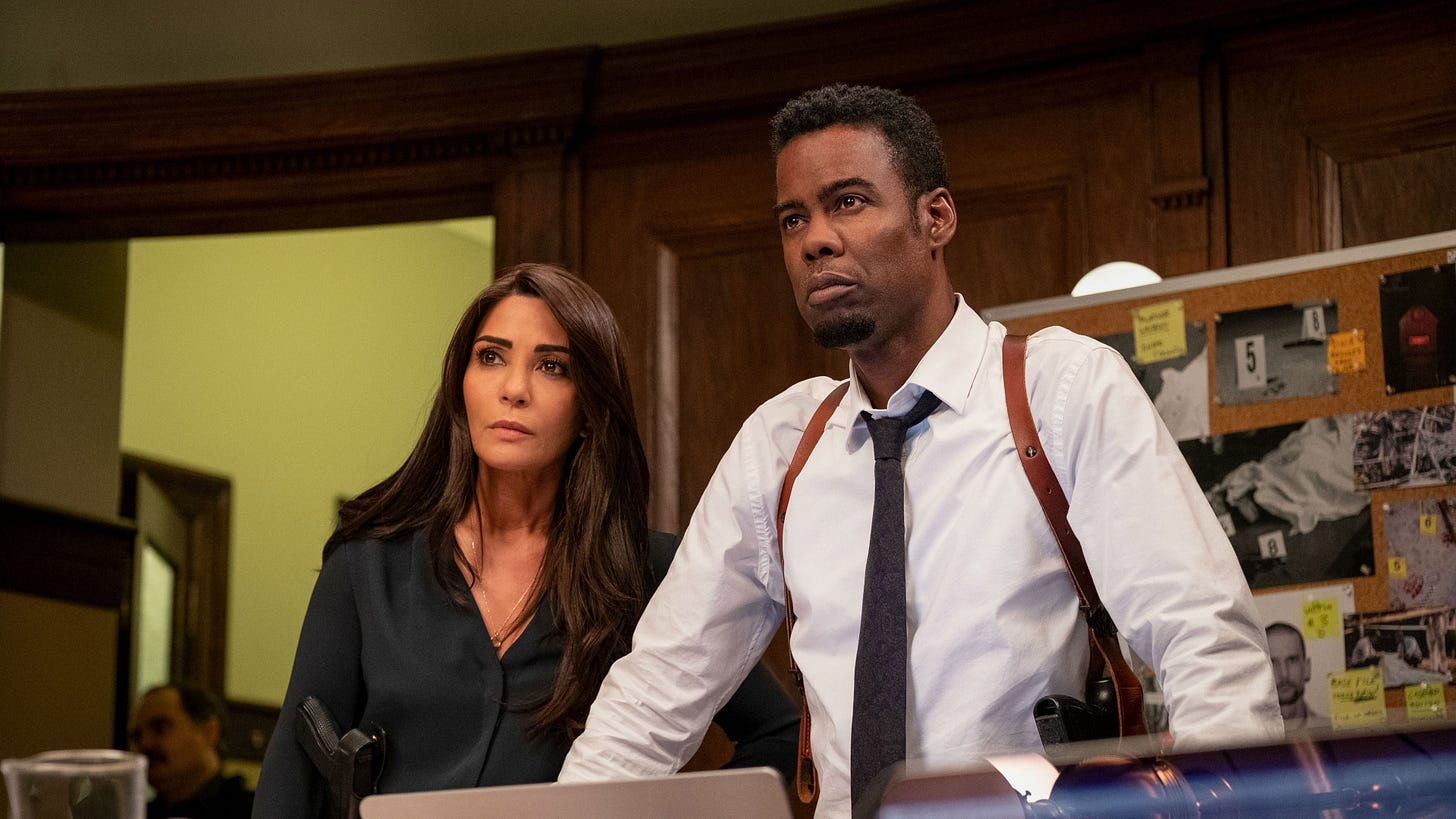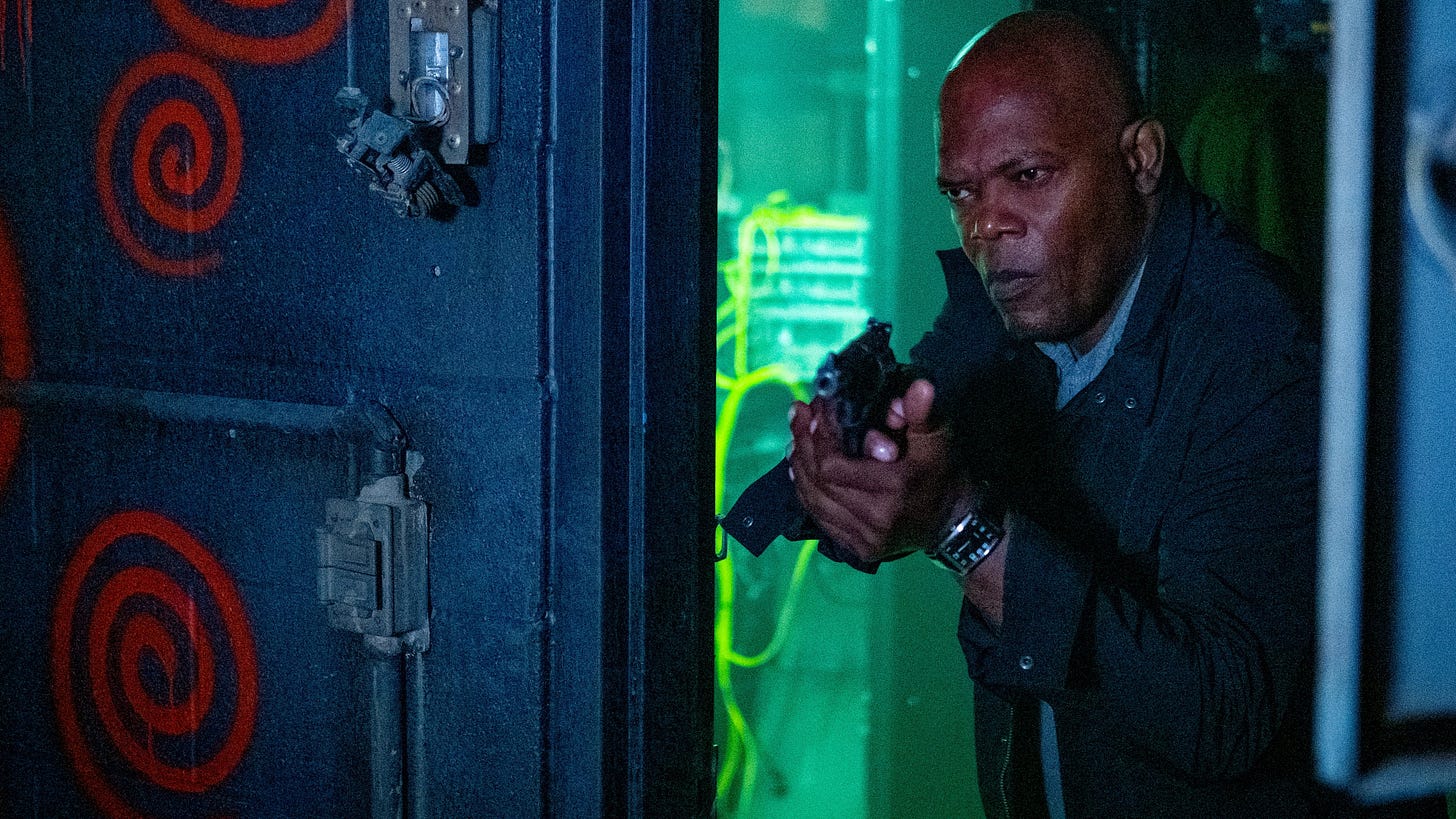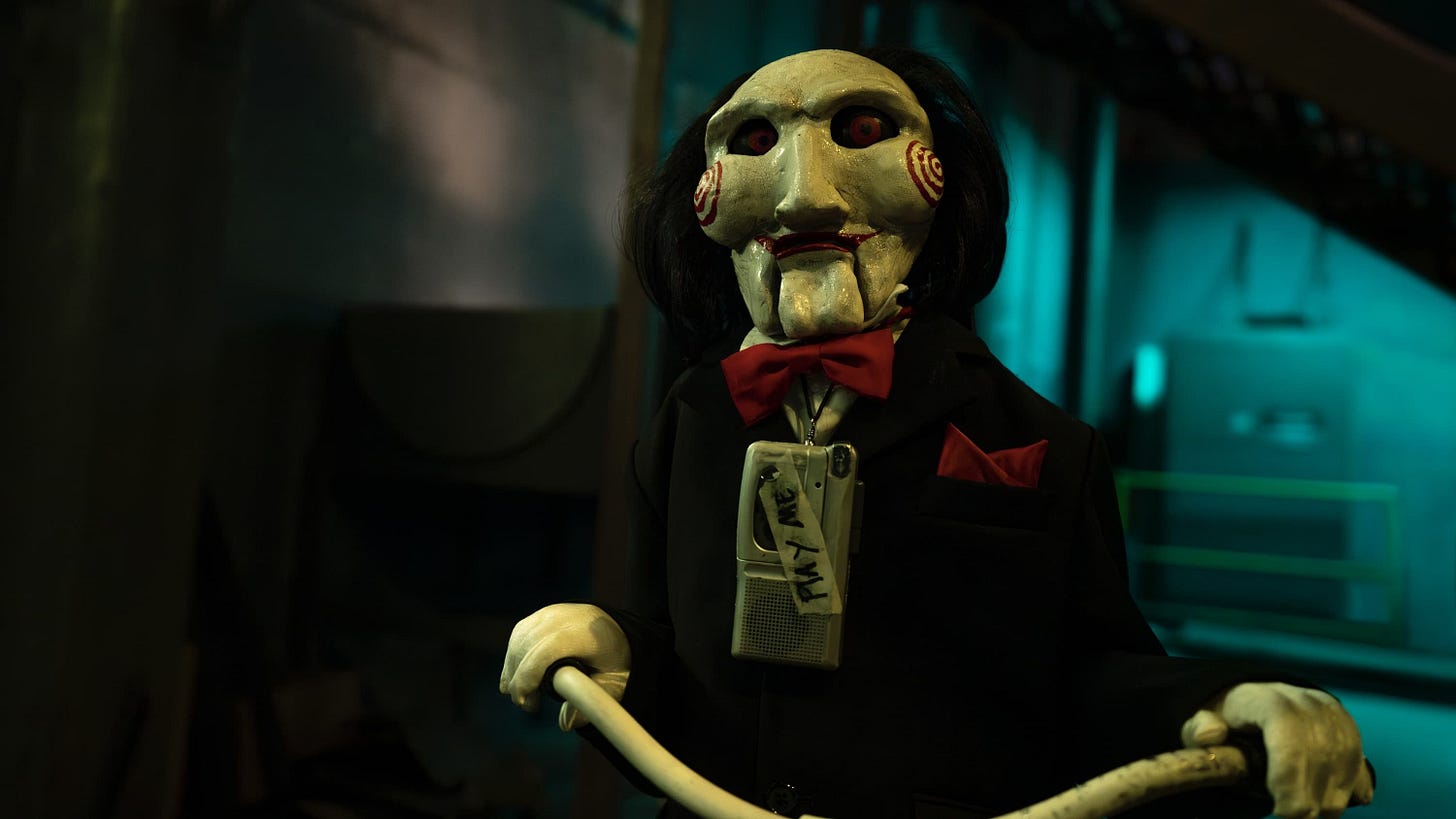Run The Series: SAW
A review retrospective of my thoughts on all 10 films in the SAW saga so far.
SAW (2004)
★★★★½
There’s nothing like your first time seeing the first Saw.
For me, it was in early 2005, right in the sweet spot between Saw’s home video release, and Saw II having yet to come out for several months or so.
I was 11 at the time, and I wasn’t really supposed to watch it. In fact, I believe I was told I was not allowed to, because it was deemed too graphic and bloody for me to watch at that age. (I think this was more my older sister’s judgement than our mother’s, since our mother didn’t care as much as she probably should have about whatever 15 or 18 rated movies I watched, and hadn’t cared for a number of years. Her only criteria was that I could watch such films if she reckoned they had value in showing the amazing things Hollywood special effects could do, and that I had to close my eyes if there were any boobs or sex scenes or whatever on screen. Beyond that, it was fair game. Hence why, by this point in time, I’d already seen The Fly, Poltergeist, Ghost Ship, Hollow Man, A Nightmare on Elm Street, and possibly even the film that The Guardian’s five-star pull quote on Saw’s UK DVD cover directly compares it to when it states: “Perhaps you enjoyed Se7en. This one goes up to Ei8ght.”)
But I sneakily found a way around this adult-enforced barrier to entry!
Because one night, during a period when my sister and her new boyfriend (now husband) were staying over for a brief however-many-days-long visit to my mother and me (after my sister had left home the previous year, because our mother was fucking evil), I found that she had brought her DVD copy of Saw with her, and she had left the disc in a portable DVD player (either her own, or mine, I can’t remember the ownership of it for sure) that had been left in my room!
So, while everyone else was sleeping, I plugged in some headphones so I wouldn’t disturb anyone (and so my Sneak Level 100 subterfuge would remain a silent secret), and there, on that portable DVD player’s tiny screen, watching it while lying in bed, is where I first saw Saw.
Before its sequels started simultaneously expanding and diluting what became the Saw brand, and before Hostel and other such grisly post-9/11 torture-filled horror films were collectively heralded/derided as the pioneers of the so-called new wave of “torture porn” or “gorno” horror, James Wan and Leigh Whannell’s original (and still best) Saw made its mark on the public consciousness with what is, at its core, a procedural murder mystery/psychological horror thriller. One not too dissimilar from any given cop show on the air at the time. Hell, even the gore is barely any more severe than your average episode of CSI, if you can believe it. But where Saw elevated itself to something special, that truly struck a twisted nerve with people, was the lightning in a bottle combination of Whannell’s tightly written twist-filled plot; Wan’s energetic and inventive directing (bolstered by the frantic ingenuity of this super low-budget film being shot in only 18 days!) that promised great things ahead for him; the grungy nü-metal music video aesthetic of David A. Armstrong’s cinematography and Kevin Greutert’s editing; the touch of 70’s horror hat-tipping homage (a bit of Black Christmas here, a lot of Deep Red and Argento and general giallo vibes there); and the biggest hook of them all: the ingenious locked room puzzle and gruesome dilemma posed by the traps, that make an audience inevitably ask themselves how far they’d go to survive and escape such circumstances, as masterminded by none other than that dastardly readymade 21st century horror icon, JIGSAW (and his trusty bike-riding sidekick avatar, Billy the Puppet)!
There’s nothing like experiencing the chilling thrills of Saw’s unspoiled twists for the first time. If anyone out there remains who somehow hasn’t had the film’s 20-year-old secrets divulged to them through pop culture osmosis, I am enviably excited for them to feel the kind of shock and powerful rush the movie still has the power to put you through. Even knowing how it ends, and knowing the strange and convoluted and often frankly stupid places its sequels will go from here, the first Saw’s sheer raw intensity in its knockout of a climax still gives me goosebumps all these years later, helped tremendously by the skin-prickling introduction of what would become the franchise’s iconic theme music by Charlie Clouser.
I love the Saw series for numerous reasons. Partially for the nostalgia of growing up alongside it during the bulk of the 2000’s. Partially because some of the films are good, and others are so bad they’re good. Part of it is the series hallmark of the various traps, and seeing how good or bad or just plain ridiculous they can be. A lot of it is because Tobin Bell’s Jigsaw is a character that captures the imagination in the way the best horror villains always do, and one just can’t help but want to see more of him.
But mostly, it’s because I loved the first Saw, and my younger self couldn’t help but be ensnared in the trap of its spine-tingling excellence. And even though the sequels were a predictable case of diminishing returns, losing the simplicity and scariness and (intentional) humour and heart of Wan and Whannell’s name-making debut, they all have their charms. Some more than others, of course.
Yet still to this day, none of them can ever cut as deep as the first Saw did…
SAW II (2005)
★★★
And so begins the downhill plunge into the Saw sequels’ increasingly irritating tendency to rely on the gimmick of crosscutting plot lines onscreen not necessarily happening on the same timeline, in order to make various plot twists happen.
But on the first go round of them doing this in Saw II, there was still some novelty to the technique, and some neat ideas and elaborations upon things the first Saw left up for debate, regarding John’s methodology, psychology, and philosophy behind why he does what he does, all of which informed the rest of the sequels going forward. Even if the rules of John’s rules were then played with fast and loose by each subsequent instalment’s need to up the ante, find new ways to be unpredictable, and work within the labyrinthine knots of problematic plots the ongoing series tied itself up in, in the mad rush to pump one of these suckers out on an annual Halloween basis.
The increased budget for Saw II is nice to see (they could afford exterior shots and multiple locations now!), and giving Tobin Bell the opportunity to really sink his teeth into John’s expanded character is a gift unto itself. But the twist in the formula to have more than two victims trapped in a house instead of a single room, and a dozen or more named characters to juggle, makes the film a louder, messier jumble of laudable ambitions, that nonetheless lacks the original film’s focus and simplicity.
SAW III (2006)
★★★★
The last time James Wan and Leigh Whannell would have any hand in the storytelling of a Saw movie, before they fully abandoned ship for greener pastures, and left this inadvertently birthed monster of a franchise in the hands of others to do with as they saw fit, resulted in Saw III being one of the last entries in the series that, in my subjective opinion, came close to meeting the high bar set by the original, with the exceptions of Saw VI and Saw X.
Where Saw III improves upon II is in how it combines the gorehound-satiating sick nasty twisted grossness of the traps and their bloody consequences - (the chains! the rib cage angel! the pig vat! THE RACK!) - with some meaty character drama and conflict that’s used to explore how John/Jigsaw’s traumatic tests of morality, and self-actualising self-preservation through life-changing/life-ending suffering and sacrifice, does and does not bear the fruits of positive change John wishes they would, thanks to his game-master trickery going over the heads of regular people whom he’s put in situations they’re not going to think calmly or rationally in, coupled with the conundrum of people’s capability and willingness for change being different from person to person. John is a fallible dying god, puppeteering fallible humans he’s foisted his traps and ideals onto, and most of his subjects will rebel against his creation, while he holds all the crucial cards close to his chest. Does John intentionally set his “subjects” up for failure through his cryptic wordplay and elaborately engineered tests? Or does he give them all the pieces they needed to figure it out for themselves, if only they’d stop, listen, and think?
The fact you can even ask thorny questions like these after Saw III’s conclusion is a testament to everything it does so well.
It’s just a shame that this couldn’t act as the concluding chapter of a solid horror trilogy, since a lot of the film feels like that’s what it’s going for. I don’t know if Whannell intended his scriptwriting swan song from the Saw series to act as a definitive end point, because on the one hand, there are some small setups of dangling subplot threads left to tie up in future instalments (the tape John cocoons in candle wax; the contents of the envelope Amanda reads from; the missing daughter)… but on the other hand, Saw III ties up most of any remaining loose ends the three films had left, bringing things full circle in its final moments with a fateful decision that irreversibly and irrevocably changes the trajectory of this universe’s story forever, and which would leave any future sequels with a huge problem they’d have little room to work around.
But that’s a story for another time…
Oh, and a few extra stray thoughts:
• That opening scene, with Donnie Wahlberg’s foot and the broken toilet cistern lid? Fucking YIKES. Perhaps still the most vicariously painful act of self-mutilation to witness in the entire franchise, at least for me.
• I actually bought (or rather, my mother bought for me) Charlie Clouser’s excellent soundtrack to Saw III on iTunes back in 2007 or so. The tracks that incorporated the ’Hello Zepp’ theme were my favourite of the bunch, naturally. I even used some of the music in my GCSE Drama class, for scoring one or more of the plays my classmates had written and performed as part of assignments in our learning. I had an iPod, and an iPod speaker, and I would use said speaker to play the pieces of music each group had agreed upon for each of their plays. My iPod was filled with film soundtracks, so I just found the right songs for the right mood for each play, and created a playlist for each one. Over the time I did this, I wound up using pieces from the soundtracks to 30 Days of Night (music by Brian Reitzell), The Bourne Supremacy (John Powell), Pirates of the Caribbean: The Curse of the Black Pearl (Klaus Badelt), The Dark Knight (Hans Zimmer + James Newton Howard), and of course, Saw III (Charlie Clouser), among others. As I recall, I believe I got a lot of mileage out of the Saw III track, ‘Surgery’, for scoring one play that needed music that was particularly dark, slow, and menacing for one scene. And what better than the cue that underscores the medically graphic brain surgery scene? Worked a treat!
• Jeff is kind of the worst, right? The kind of person who’s constantly reluctant to make any kind of meaningful immediate choice about any important decision presented to them, frozen in inaction, until they finally decide to actually do something, but only when it’s far too late. Kind of like Chidi from The Good Place, but far less endearing.
SAW IV (2007)
★★★
With original creators James Wan and Leigh Whannell gone, and practically 90% of all established characters killed off (including the primary villain, Jigsaw himself!), how does the Saw franchise keep going in order to continue milking that cash cow dry?
Well, in what would be Darren Lynn Bousman’s last stint in the director’s chair for the series (until his return 15 years later for 2021’s Spiral, the second soft reboot for the franchise), and with the introduction of writers Patrick Melton and Marcus Dunston charting a new course for the ongoing story to follow in Jigsaw’s absence, the answer proposed by Saw IV is to… basically double down on explaining John Kramer’s backstory, add a shit-tonne of new characters, fuck around with the timeframe to try and surprise the audience with exponentially more ridiculous twists, and then mine the absolute everloving shit out of all of those things for as long as humanly possible.
It’s not as egregious in Saw IV as it will start to feel from Saw V onwards to the franchise’s first soft reboot, Jigsaw. But you can feel herein that they’re beginning to manufacture ways to spin their wheels indefinitely, while they figure out how the hell to keep this series going without Jigsaw.
At least IV has the neat idea of using a Jigsaw game to force a player to go through the process of becoming a Jigsaw acolyte themselves, by way of interacting with other people enduring their own games within that game, and all these games intersecting with one another in a maddening tangle of variables impossible for any one man to predict anywhere besides the confines of a movie. (The convolution is strong with this series!)
However, I did have the pesky thought occur to me early on in the film - with the “one guy can’t see, one guy can’t talk” mausoleum trap - that these games, with their wickedly tricksy rules, are like if Greg Davies and Alex Horne were super evil in concocting their Taskmaster tasks, and thus I kept thinking about Saw as a gorier life-or-death version of Taskmaster, which kind of took the wind out of the sails of the film’s serious, grim tone.
That’ll be fine for the later films, when all pretence is vanished, and they wholly devolve into/embrace pure camp goofiness.
Then again, maybe it was always camp all along…
(Also: HOW THE FRICK COULD THEY GET THOSE ICE BLOCKS UP THERE, SERIOUSLY?!)
SAW V (2008)
★★★
From David Hackl, longtime production designer on the series, to 2nd unit director on the fourth film, to full promotion to director for this fifth film, comes Saw V - one of the less well-regarded instalments of the franchise, usually sitting somewhere at the bottom of fans’ rankings alongside Saw VII, a.k.a. Saw 3D, a.k.a. The Final Chapter (yeah, right).
Though to my surprise upon revisiting it afresh, Saw V is, like, fine. It’s okay. It’s got its moments, some good scenes, some memorable traps, and whatever.
But this film is the one where it feels the most like an episode of television, and a sort of filler episode at that, where pieces on the board get moved around to facilitate other plot machinations slotting into place so that the really good stuff can happen in the next episode.
Having most of the characters be agents of law enforcement, and the cast populated with the familiar faces of loads of Canadian TV actors (though what else would you expect from these movies all being shot in Toronto?), only adds to that generic procedural cop drama look and feel. So instead of the finale being a thrilling onrush of plot twists and character deaths, it just feels like a network TV show ending another bog-standard throwaway episode in workmanlike business-as-usual fashion, ready to cue up the next episode on autoplay for your binge-watching convenience.
Even my younger past self could feel these undeniable early signs, of the franchise experiencing fatigue at the prolonging of its existence, creeping in to the films by then, even though I was still a Saw fan through and through, sticking it out ‘til the bitter end.
The following post was written on my Tumblr, after I had watched Saw VI in April 2010, back when I was 17, and didn’t yet have the vocabulary to know that what I was attempting to describe was serialisation. Obviously I would’ve encountered it plenty of times on TV, in books, in films, and in comics, because loads of the most popular fictional media around employs serialised storytelling. But as that word wasn’t on the tip of my tongue at the time of writing, this was the only way I could articulate it, flawed simplistic arguments and all:
“It didn't really become noticeable until Saw II, but throughout the time I've been watching the series, I can't help but notice the overriding presence of TV Land within the series' bowels.
With Saw, you had Cary Elwes from Hot Shots!, Robin Hood: Men In Tights, and The Princess Bride. You had Danny Glover, from all the Lethal Weapons (and later, 2012). You had Monica Potter, from Con Air (and later on, The Last House on the Left remake).
But, most noticeably of all, you had the guy who played Zepp, who later played Ben in Lost. You had the producers Mark Burg and Oren Koules, who also produce Two And A Half Men. You had the (now regular) composer, Charlie Clouser, who does the music for the show Numb3rs.
And so on.
But of course, you can't leave out The Boss in this matter, and that guy is Tobin Bell (aka JIGSAW), who has been in more American TV movies of the 90's than I can possibly remember, and now look at him! He's fucking JIGSAW!
But then, from Saw II to VI, the series has been overrun with even more TV personalities.
Donnie Walhberg - the guy from failed TV series Runaway, and failed TV series The Kill Point.
Costas Mandylor - the guy who played the priest in Sex And The City whom Samantha masturbated over whilst singing operatically.
Louis Ferreira - the guy that was in the show 1-800-Missing, and now is in Stargate Universe as the colonel who keeps turning into Lou Diamond Reed.
Julie Benz - Dexter's slightly annoying girlfriend from Dexter.
Peter Outerbridge - the guy from ReGenesis.
And so on and so forth.
My point is this:
If the Saw franchise were transferred from silver screens to HDTV screens, there wouldn't be much of a problem. The whole Saw-did affair (geddit?) is already controlled by numerous TV veterans, so it would be reasonable if they turned it into a TV mini-series.
It would be just the same... only without you paying around 8 quid for a ticket every October...”
SAW VI (2009)
★★★★
Wow. I always remembered Saw VI as being a surprise jolt of rejuvenation after films IV and V felt like the series was starting to spin its wheels as it circled the drain, but goddamn, Saw VI goes hard in much the same way that the best Saws do.
With longtime series stalwart Kevin Greutert pulling a John Glen (of the James Bond franchise) by graduating from recurring editor to full-blown director, and writers Patrick Melton and Marcus Dunstan seemingly finding their groove and hitting paydirt in the process, Saw VI finds a renewed way to make one of these movies feel exciting and razor-sharp again.
The method?
Partially by leaning into Detective Hoffman’s character doing everything in his power to keep his allegiance hidden as Jigsaw’s pre- and posthumous apprentice, mining suspense out of the noose tightening around him as his lies and crimes threaten to be unmasked at any moment, which makes Costas Mandylor’s brutish thuggy slab of muscle of a man a lot more interesting.
But the biggest factor to Saw VI’s late-series greatness is in how explicitly political it gets with the targets who provoked John’s ire.
Before this point, a troubling question to ask of the Saw series was whether or not these films were potentially of a piece with the violent conservative revenge fantasies peddled by the likes of Death Wish. Like, as we see and learn more about the decrepit, nameless hellhole of a city the Saw films take place in, and see more of the types of people Jigsaw and company choose to be “tested”, a couple of things become clear:
1) This anonymous anywhere of a city is a cesspool of scum and villainy, filled with corrupt cops, rotting buildings, drug dealers, addicts, prostitutes, ex-cons, convicts in waiting, and so on. It’s a miserable place to live, and anyone trying to do good is a rarity.
2) John appears to have troubling attitudes regarding mental health, addiction, and especially self-harm. It makes sense as part of his overall “cherish your life” mantra that underpins his motives for everything he does, as the unsubtle implication thereof is that people struggling with the weight of living, finding solace only in abuse of substances or abuse of their own bodies, are not cherishing their lives very much at all. But what that doesn’t take into account is the question of: how can they cherish a life whose circumstances are what make their lives terrible to begin with?
Not to peddle the old rote Reddit argument of “Batman could save Gotham City by using his money to change the system instead of going full vigilante and punching poor people”, because obviously this is Saw - it ain’t that deep.
But if it were… then in this allegorical comparison, Jigsaw is the Batman of his own Toronto-shaped Gotham, using his fortune to forge traps instead of batarangs, wearing a dramatic costume and exaggerated gravelly voice to hide his identity, all to ostensibly change the city for the better, one lowlife and one life-squandering person at a time.
The flaws in this comparison are that John Kramer may be rich, but he’s not Bruce Wayne rich, nor is he Bruce Wayne powerful. The only form of power John can wield to make people change their ways (at least as he sees it) is through his death-dealing traps. But his methods of “rehabilitation” and “rebirth” won’t - can’t - do anything to change the systemic societal issues that create the kinds of people he wants to “save”. The Jigsaw method is merely an imperfect treatment (to put it extremely fucking mildly) for the symptoms, not the disease.
But again, I know, it’s just Saw. It is not designed for such scrutiny. It is merely mindless 2000’s horror entertainment. To paraphrase the philosophy espoused by Christopher McQuarrie regarding how deeply one should read into certain popcorn entertainments, during his Empire Spoiler Special podcasts about the making of Mission: Impossible - Dead Reckoning: “Enjoy your meal, don’t eat too much bread.”
The point is, Saw VI deciding to pick a target for Jigsawing that everybody can get on board with, in the form of predatory insurance company bigwigs exploiting the American healthcare system to ghoulishly profit off denying coverage to desperate and dying people, is an ingenious way of getting an audience back on the side of John’s bloody crusade, via uniting over a common enemy. Because it’s a lot more cathartic seeing an evil rich guy, a wretched yuppie parasite of capitalistic greed, get a brutal reckoning for his abhorrent misdeeds, than it is to see a person struggling with addiction or depression being vilified and punished for feeling hopeless in a hopeless world.
Rewatching Saw VI also hammered home for me how there’s a mostly unspoken, yet clear hypocrisy, to John’s claims of following some moral rule of impartial clinical and emotional remove from the test subjects he chooses for his traps. (“It can never be personal”; “Killing is distasteful”; etc.) Because if that were true, then how come so many of his subjects turn out to be people who personally wronged him?
Saw: The doctor who diagnosed him with cancer.
Saw IV: The drug addict who caused the miscarriage in John’s wife, Jill.
Saw VI: The insurance company head honcho who illegitimately denied him coverage for his cancer treatment.
Saw VII: The self-help guru who falsely claimed to be one of John’s victims, lying about John to make a profit off of a scam.
Jigsaw: The nurse who carelessly mislabelled John’s CT scans that would have detected his cancer sooner, plus the guy who sold John’s nephew a faulty motorcycle that lead to his death.
Saw X: Literally the entire plot of the movie.
You get the point.
Is that not revenge, then? John can gussy up his logic with philosophical and moral diatribes all he wants, but he still uses his traps for retribution (and therefore murder) as much as his faulty disciples do.
Whether or not that’s an intentional nuance folded into the debates over John’s character is unclear to me. But it’s there for those who look for it, and I love that a horror villain can have so many layers to unpack long after the credits have rolled.
It’s also fun to note the parallels (or, I guess chronologically, pre-parallels) between John Kramer and Walter White.
A well-off middle-aged fiftysomething guy, diagnosed with an inoperable cancer, finding renewed purpose in his dying days through criminal activities, leading a double life as a regular mild-mannered man, and a mythic mononym-monikered alter ego mastermind, who recruits a drug-addicted younger assistant to help him? I mean, c’mon!
Hell, if you include Jill Tuck in this parallel, then she’s the Skylar to John’s Walter - a blonde-haired wife who becomes a tangential accomplice to her husband’s extracurricular activities, and whom a vocal part of the fanbase hated and wished would die (for reasons that definitely weren’t misogynistic in nature, nope, not one bit).
Oh, and a sneaky little foreshadowing I caught this time around was that the “Dog Pit” sextet - the six people who wind up in the merry-go-round trap - are first seen sitting together at a round table, mirroring how they’ll be seated in a circular fashion later on in the film.
Perhaps they’re even sitting in the same order in both scenes, I wonder?
Take a look, and see what you think:
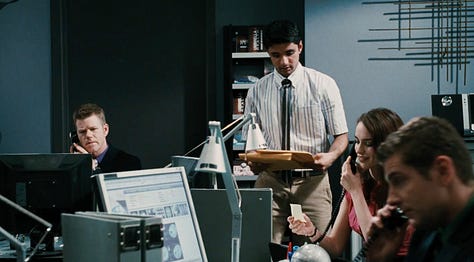
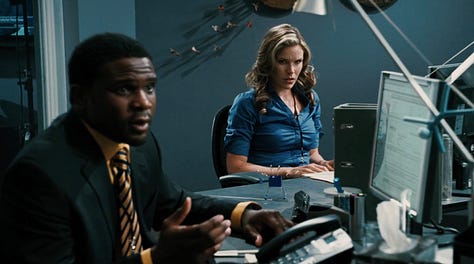
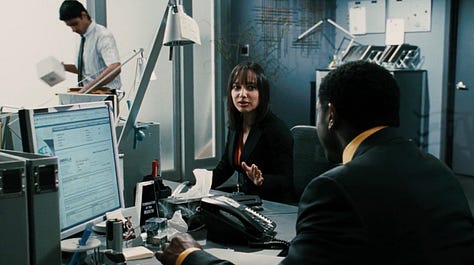
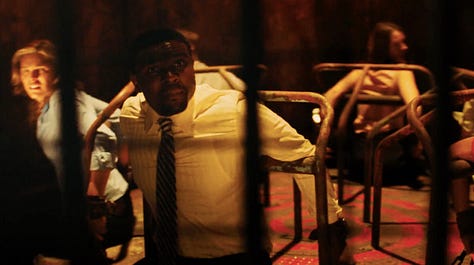
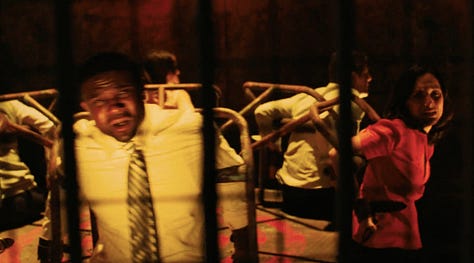
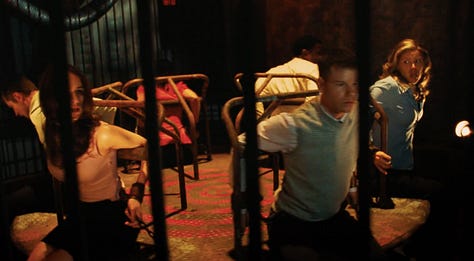
But even if they’re not in the exact seating arrangement in both scenes, it’s a nice touch on Gruetert’s part that these two shots down below are made to mirror each other so perfectly from across two different points in the film, which is just another example of Saw VI going that little extra mile. I don’t know about you, but I can’t help but appreciate the effort.

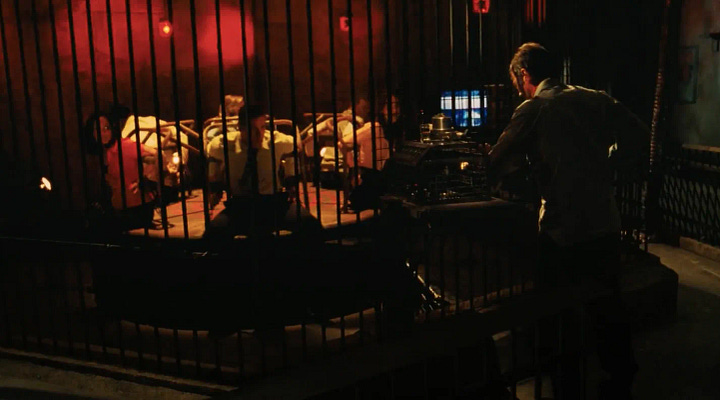
SAW: THE FINAL CHAPTER (2010)
★★★
Pure schlock. Pure camp. Pure fan-service. Pure so-bad-it's-good trash.
No more of the gritty, grainy, ugly beauty of 35mm film that the past 6 films were shot on, instead replaced by the digital, flat, ugly sludge of shooting in fad-chasing 3D, with said 3D gimmickry resulting in many moments of poke-your-eye-out visual silliness.
An unintentional comedy of goofy errors, or an in-on-the-joke self-parody with tongue squarely lodged in its cheek?
What with the preposterous out-in-public opening sequence (“I think we're breaking up with you, Tina!”), the fake-out dream sequence, Kevin Zeger's weirdo performance, Chester Bennington's cameo in a trap sequence that's cartoonishly absurd in its extremity, the at-long-last returning Cary Elwes (!) chomping on the scenery with the panto gusto of a man who got a fat payday settling his years-long lawsuit grudge against this series out of court, and the hysterical sight of John Kramer wearing a tracksuit and backwards baseball cap… I feel like I'd be naive to believe they weren't embracing the joys of wilfully jumping the shark, and fucking around for the hell of it.
I should hate Saw VII: The Final Chapter (in 3D!), but I'd be lying if I said it didn't make me frequently laugh at its bawdy bloody shenanigans, and that I wasn't entertained by how all 7 movies are wrapped up in a nice little bow by all the utterly insane preponderances of crazy contrivances they came up with.
Plus, it's not as dull and (in a bad way) dumb as Jigsaw, and not even close to the painfully boring and (in a bad way) laughably acted Spiral: From the Book of Saw, so I can't in good conscience say Saw 3D is the worst of the worst of the Saw franchise. At least, not in terms of sheer crowd-pleasing entertainment value, which it has in spades...
JIGSAW (2017)
★★
Initial theatrical release review,
November 8th, 2017
★★★:
So, um... Jigsaw, huh?
Eh. It was fine.
It's entirely preposterous, so very very clunkily written, filled to the blood-soaked brim with contrivances, conveniences, convoluted cheatings with its fiddling around with time and space, and as many intrinsically-linked plot holes as there are plot twists...
...soooooo, exactly what you'd expect from a Saw sequel!
Positives-wise, the Spierig Brothers - late of Daybreakers and Predestination - provide a more glossily polished cool colour-paletted cinematic sheen to the Saw-niverse, which is more indebted to Michael Mann than the Nine-Inch-Nails-music-video aesthetic James Wan crafted at franchise's start.
The mystery about who the killer is, and whether or not the film will have the sheer cajones to literally resurrect Jigsaw from the grave like a true horror movie villain, is engaging enough while it lasts, throwing you for a loop as it makes you wonder which ridiculous solution the story will settle on.
And it's kind of mildly nostalgically pleasing to have another new Saw movie in existence, with more plausibility-straining deathtraps, more of Tobin Bell's gloriously sinister rasping voice, and more variations of Charlie Clouser's iconic ‘Hello Zepp’ theme.
Objectively, the film is a bit of a damp squib, with the twist (regarding its atypical timeline-fuckery gimmick) carelessly given away halfway through, the finale's stupendously stupidly complex exposition-dump feeling head-spinningly rushed (and kind of hard to hear, thanks to some less-than-stellar sound-mixing), and the entire thing overall not making quite enough of a case for itself as the impetus for a full-blown reboot of the Saw saga.
Still, it was generally pretty fun while it lasted.
And I'm not opposed to the idea of more Saw films, in concept. I just think that if they do do (heh heh, "do do") more of them, they should be prequels, fully committing to bringing back Tobin Bell, and showing John Kramer/Jigsaw do his thing back when he was still alive,1 instead of perpetually contriving ever-sillier ways of having him influence events after his death in the third film.
Just a thought.
Live or die. Make your choice.
Do, or do not. There is no try.
There is no spoon.
Wax on, wax off.
Klaatu barada nikto.
Hakuna matata.
Ohana.
Tinkywinky, Dipsy, Laalaa, Po.
So it goes.
(I don't even know...)
Rewatch review
October 2nd, 2023
★★:
In retrospect, introducing frickin' lasers to the Saw-niverse was a colossal miscalculation.
Sure, all the Saws are inherently silly, but Jigsaw adding lasers to the mix somehow feels incontrovertibly wrong, a sci-fi-esque step too far beyond the visceralness of tactile traps built with chains and gears and blades that are this franchise's trademark. (The use of noticeable CGI in certain traps also feels antithetical to the series-long dedication to practical special effects and prosthetics previously.)
It doesn't help that the rest of Jigsaw itself is so stupid, annoyingly contrived, and dull as dishwater, that I choose to wholeheartedly disregard its place in the canon of the Jigsaw saga.
And yet, with all that being said, even then it's still not as bad as Spiral would soon prove to be...
SPIRAL: FROM THE BOOK OF SAW (2021)
★
So I guess Chris Rock thought he could try his hand at following in the footsteps of Jordan Peele and Danny McBride in that late-2010's boom of comedians making horror movies, and making bank in the process.
Unfortunately for him, alas, Chris Rock is no Jordan Peele... though he may be on par with the Danny McBride who co-wrote Halloween Kills and The Exorcist: Believer.
But even then, McBride hasn't yet made the mistake of acting in one of the misfiring horror duds he had a hand in writing.
The same cannot be said of Rock, whose woefully disastrous, unintentionally hilarious “dramatic” performance at the heart of Spiral is the single biggest contributor to the film's downfall, and is one of the worst things ever to happen to Rock by his own hands.
(dontmakeawillsmithjoke,dontmakeawillsmithjoke)
Every serious moment of his acting feels constipatedly forced, his every line delivery rivalled only by the kids in any given primary school play. At his funniest when he's trying to be serious (the meltdown-in-a-car moment coming off like a child's exaggerated fist-pounding tantrum), and anything but funny when he's interspersing scenes with his bad improv and bad “comedic” dialogue, his hackneyed jokes landing with the thud of a lead balloon (much akin to the worst of the ill-judged comedy beats in the David Gordon Green Halloween trilogy), Rock drags down the movie whenever he's on screen, cancelling out the efforts of the rest of the solid cast who out-act him to an embarrassing degree. Apparently, he claimed this film was not a vanity project for him, and I'd have to agree; after all, this level of self-inflicted humiliation would surely rob anyone of any vanity they had left.
I was once cautiously optimistic for Spiral's prospects when I watched its first trailer, and the flavour of the plot was teased to be something to do with someone using Jigsaw traps as retribution against corrupt cops. I thought it would be akin to Saw VI's explicitly political targeting of health insurance companies preying on the sick and the dying, only this time - (and bearing in mind this thought process was influenced by the then-relative recency of the Black Lives Matter movement's worldwide outcry and resurgent protesting against racist police brutality after the killing of George Floyd) - it looked like maybe a Saw movie was going to be about someone employing John Kramer's methods to seek righteous retribution against racist police officers.
And that's... almost something that factors into Spiral's themes. The ending certainly feels like it could've had an element of those concepts informing what happens there. But mostly, Spiral is a letdown of lacklustre plotting, lacklustre ideas (save for the pretty good and gorily gnarly ideas for the traps), and a lacklustre villain where the twist reveal of who they are is so flagrantly obvious, you'd probably correctly guess them and their predictable motivations on your first try.
From the off, you can tell the vibes of this instalment are all wrong when, instead of seeing Billy the Puppet talking with Tobin Bell's voice, you see someone in a pig mask talking with some annoying childlike computerised monotone voice. Saw without Bell is like a cookie without chocolate chips - it's just not the same.
So how could they have remedied this? Well, I'd have been willing to accept something like the Saw-niverse taking a leaf from the Scream-iverse's book, and introducing some widely available voice-changing gizmo that anyone can use to mimic Jigsaw's voice to cloak their identity. (There's even some precedent for that in previous Saws, where Hoffman was able to change his voice on a tape to sound like Jigsaw, so why not expand on that?) At least then, with Bell's iconic voice still in the mix, Spiral would feel more believably a part of the same world as the first seven Saw movies. But without the presence of Tobin Bell in any capacity - sans his voice, sans any surprise flashback cameo, just a single measly shot of his face in a photo - this just doesn't feel like a proper Saw.
And seriously, I mean, how do you fuck up the irresistible premise of having Samuel L. Jackson in a Saw movie?! This should have been a slam dunk!
Instead, by and large, Spiral is the worst thing any movie, let alone a Saw movie, can be: painfully boring as hell.
At least whenever Jackson is on screen, the movie has a spark of life to it again, which is otherwise snuffed out the rest of the time by Rock's amateurish acting.
Also: what is with the weirdly pervasive amount of product placement populating Rock's dialogue? Whenever he's spouting his offcuts of bad stand-up material in his attempts at levity, Rock is a stream of dated pop culture references (Forrest Gump, New Jack City) and a litany of brand names (with one excruciating scene seeing him just list a bunch of apps and streaming services, and that's the joke). It's as intrusive as the Baskin-Robbins line in 2023's Haunted Mansion, and as obnoxiously numerous as in the various lesser movies of Chris Rock's chum, Adam Sandler.
Do I have anything positive to say about Spiral?
Um... Jordan Oram's cinematography is nice.
The traps are sufficiently torturous and bloody.
Darren Lynn Bousman's directorial return makes this visually and editorially feel closer to past Saws than Jigsaw did.
It kept Charlie Clouser employed for another film.
Max Minghella's good.
It was nice to see multiple cast members from cult Canadian fantasy series Lost Girl turn up in small roles. (Them’s the benefits of shooting in Toronto, baby!)
Samuel L. Jackson says “You wanna play games, motherfucker?”
That's about it.
Otherwise? Poo.
SAW X (2023)
★★★★
God, it’s good to have a good Saw movie again.
Nothing can beat the original, of course, but Saw X's inbetweenquel2 thrills, finally affording Tobin Bell's John Kramer a whole movie's worth of dedicated plot and character depth, comfortably ranks this tenth entry right up there with Saw III and Saw VI among the best of the sequels.
Key to this film’s impact is the emotional pathos that comes with Bell officially taking centre stage in the narrative, and he delivers a fantastic performance to meet the occasion. By all rights, you shouldn’t feel such sympathy for this man who is undeniably a prolific serial killer, no matter how much be believes his techniques of intricately engineered traps distance him, figuratively and literally, from directly perpetrating acts of murder. (As this YouTube video below details, if you were to charge John Kramer for all the crimes he committed in his lifetime, he’d be sentenced to over a thousand years in prison, bare minimum!)
But a canny move on Saw X’s part is in its foregrounding of John’s vulnerability in facing his mortality, the desperate measures he took to stave off the inevitable death prescribed by his terminal cancer, and by extension, confronting him with morally reprehensible con artists who preyed on his desperation, incurring his wrath in a way anyone could understand, and maybe even get behind. Within that premise, Saw X then compounds this complicated empathy for John’s plight by pitting him against a ruthless antagonist who is genuinely far more evil to their core than he is, someone who can abandon any pretence of humanity at a moment’s notice if it means coming out on top.
On the technical side, I commend returning director Kevin Gruetert for relenting from the overly polished slickness of the visual styles employed in Jigsaw and Spiral, as he reinstates a grubbier, grittier look (not to mention a full frame aspect ratio) that’s more in line with the looks of the films as they were during the 2000’s. The series may not be shooting on film anymore, but Gruetert makes a decent compromise in shooting digitally by finding a new visual sweet spot between scrappy grunginess, and grimy beauty.
Credit is due as well to the decision not to deploy distracting de-aging CGI on the noticeably older cast members, returning for this inbetweenquel taking place twenty years in the past. They may not look exactly the same as they did two decades ago, but the film makes the ultimately wiser choice in allowing audiences to willingly engage in suspension of disbelief on the matter, which only adds to Saw X’s overall charm, and its ability to withstand the test of time going forward.
It’s amazing that a franchise now ten movies deep into its ongoing existence can produce such a sterling return to form, particularly since it had been three films and fourteen years since the last genuinely good entry (Saw VI) graced the silver screen. But now, with the critical and commercial smash success of this film proving the series still has the legs to go on a little while longer, there’s welcome cause for hope that maybe the upcoming Saw XI will keep this positive momentum going.
The only thing that’s a shame is that Saw X didn’t follow the precedent of Jason X and send Jigsaw into space, but hey, what can you do…?
(Holy shit. Did I accidentally predict Saw X six years in advance? O_O)
Inbetweenquel, noun: an instalment of a serialised franchise that chronologically takes place between two other previous parts.
(e.g. “Saw X is an inbetweenquel whose events occur after Saw, but before Saw II.”)





